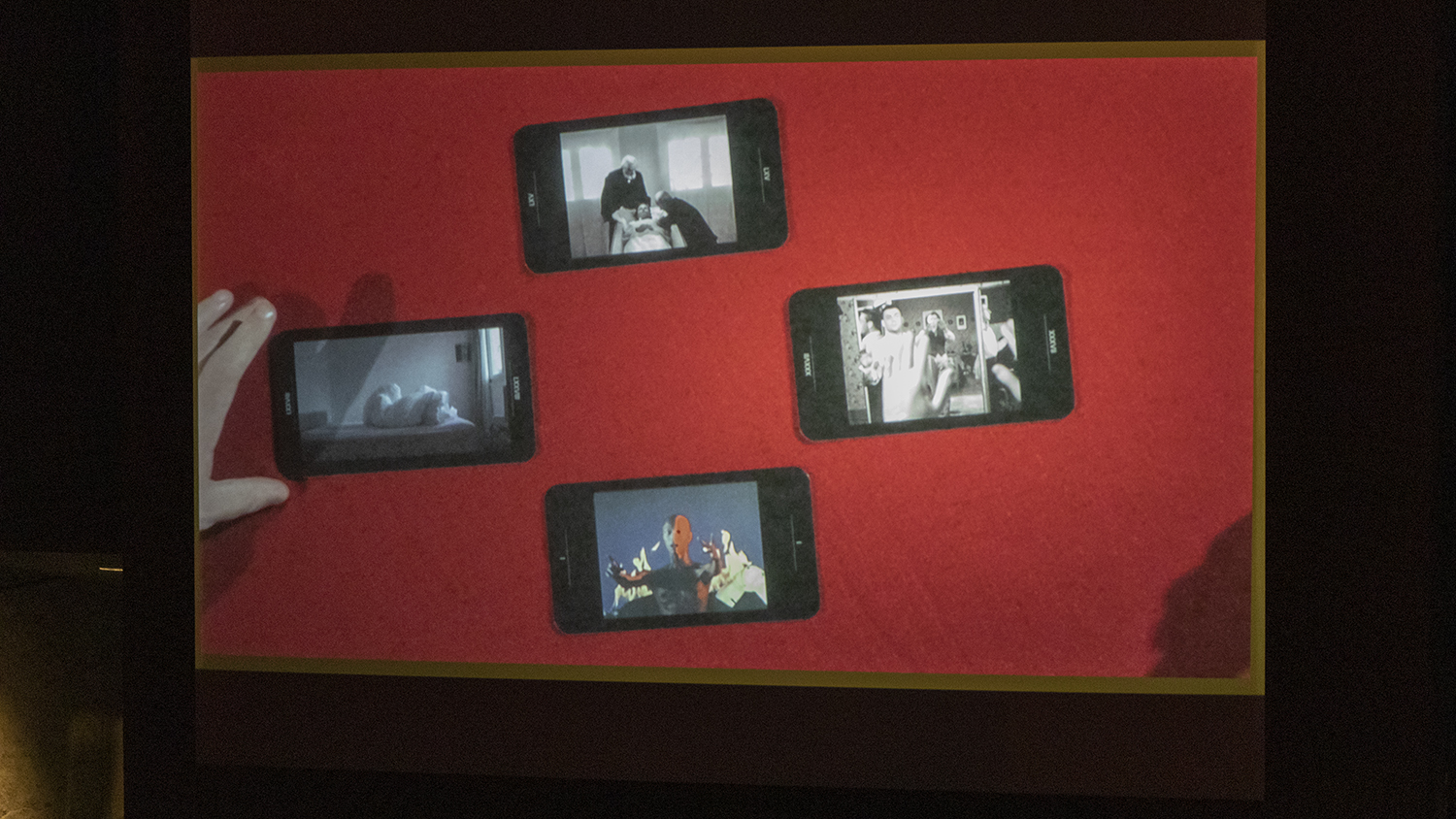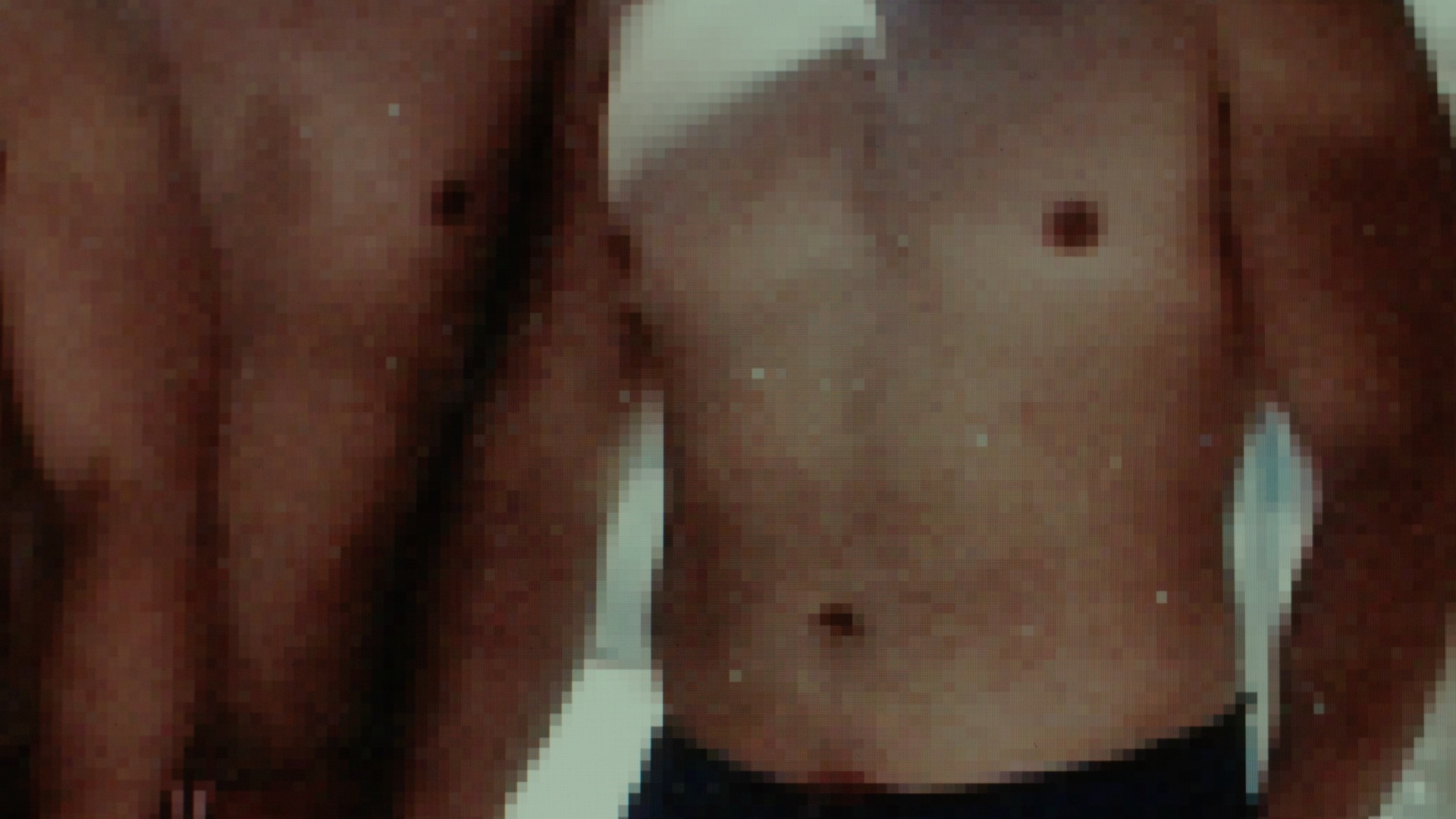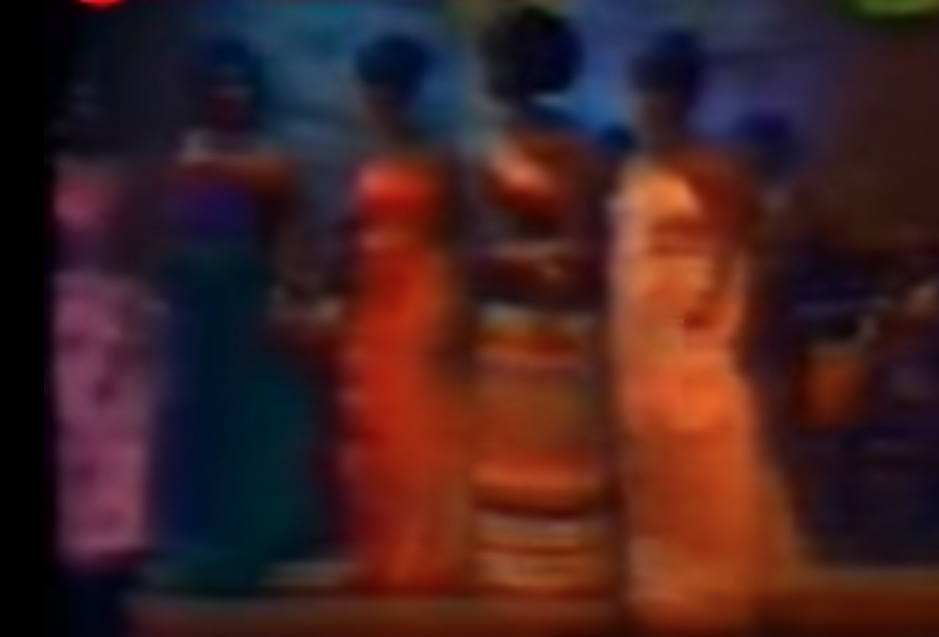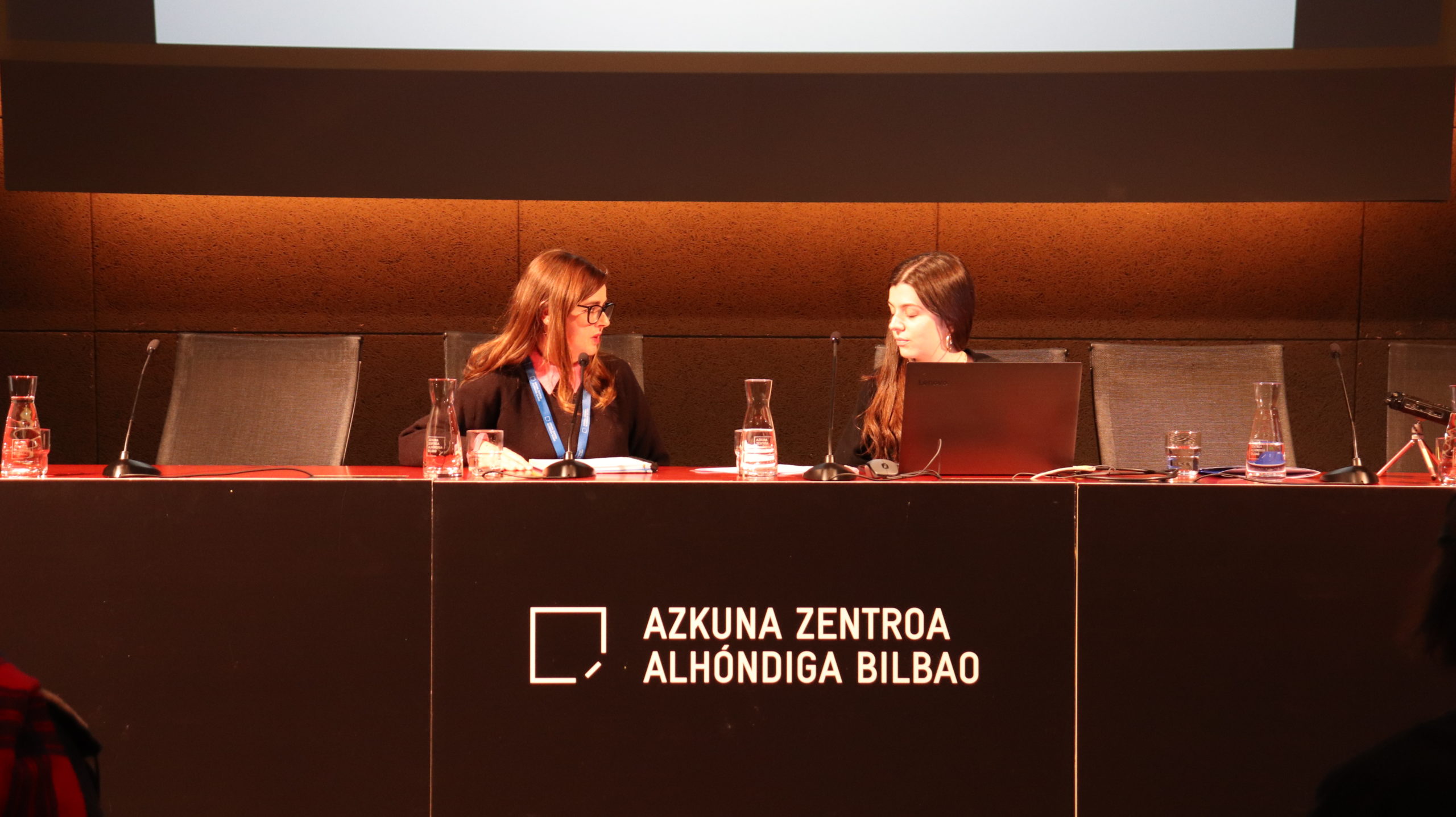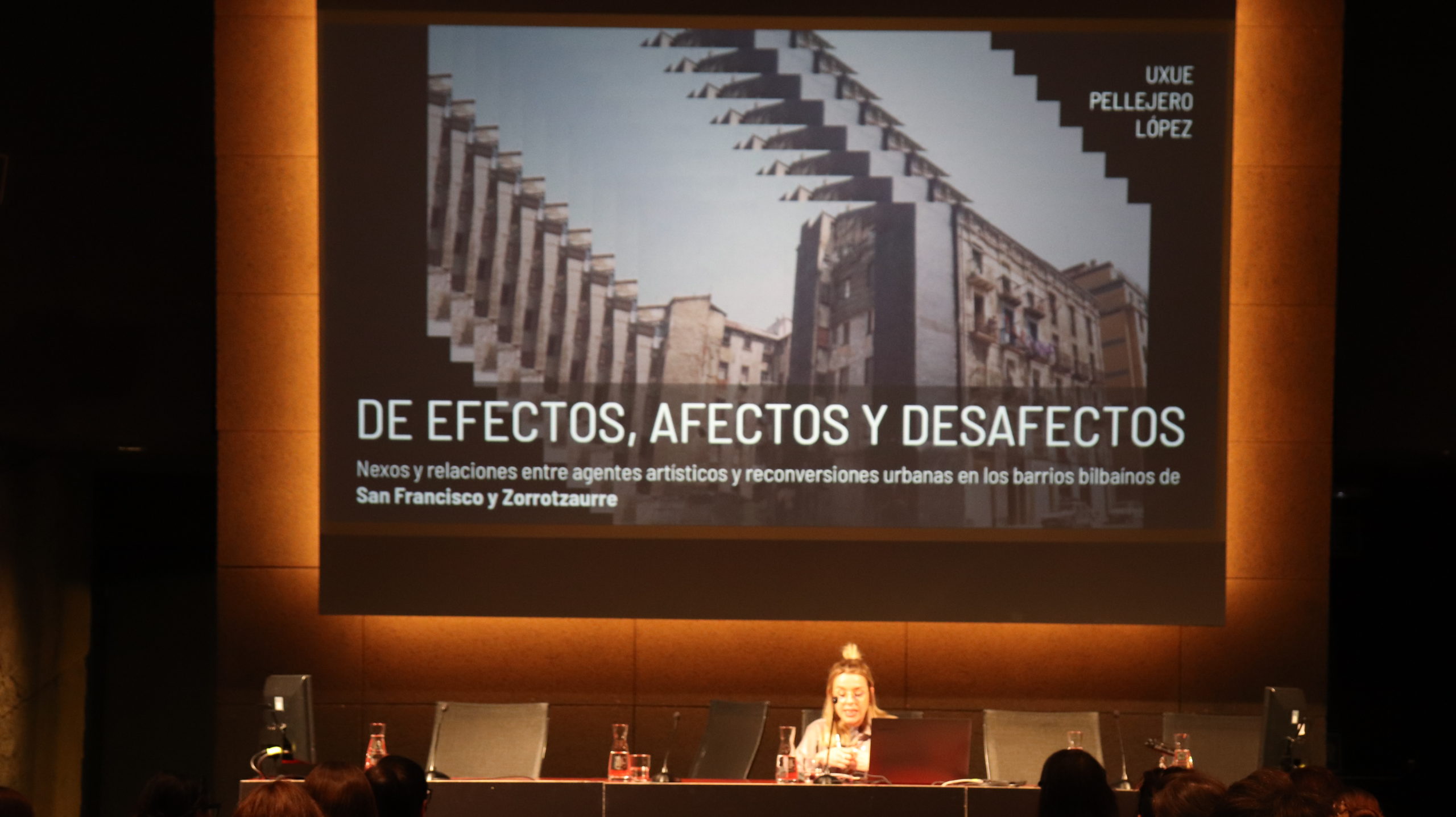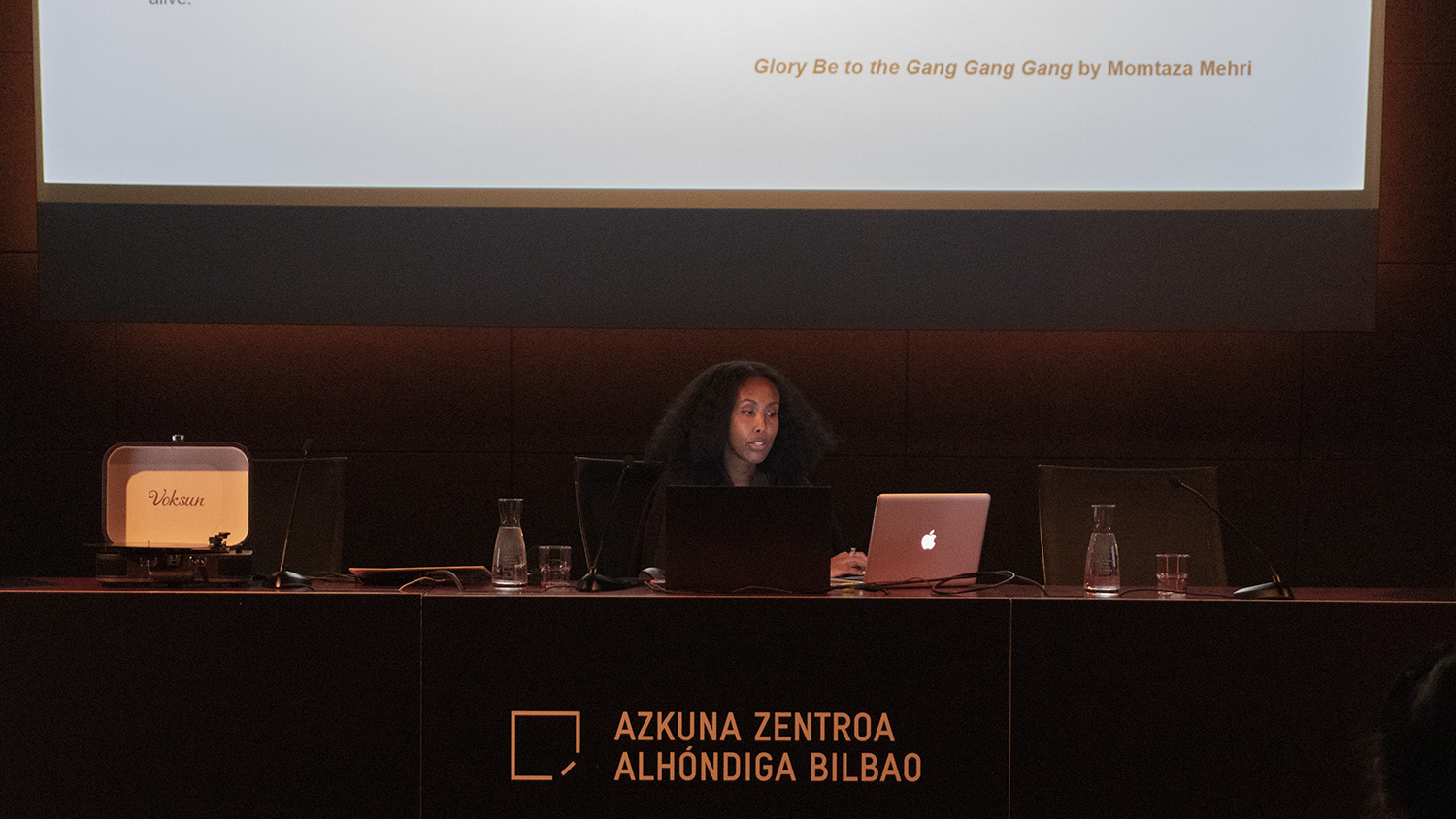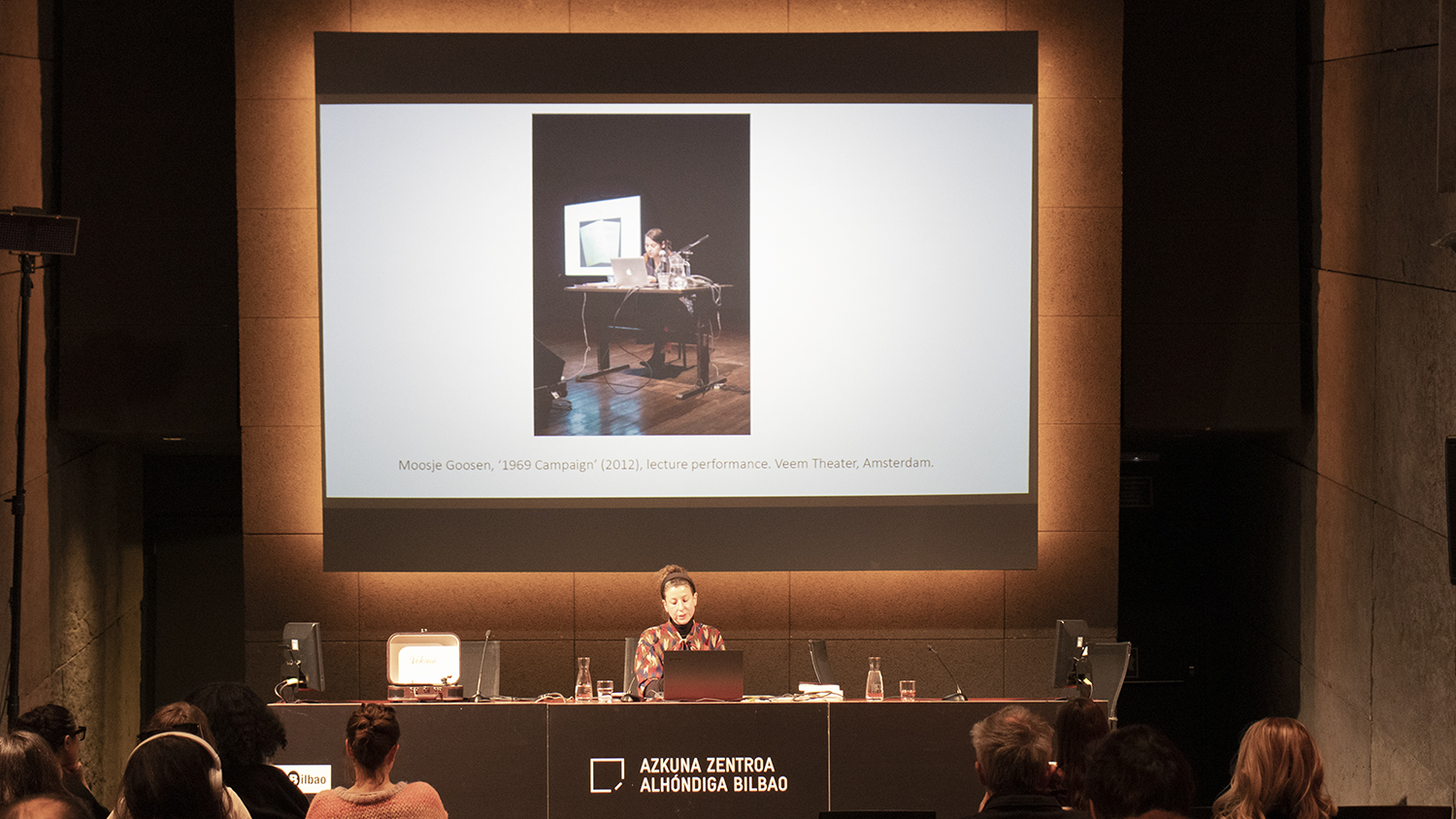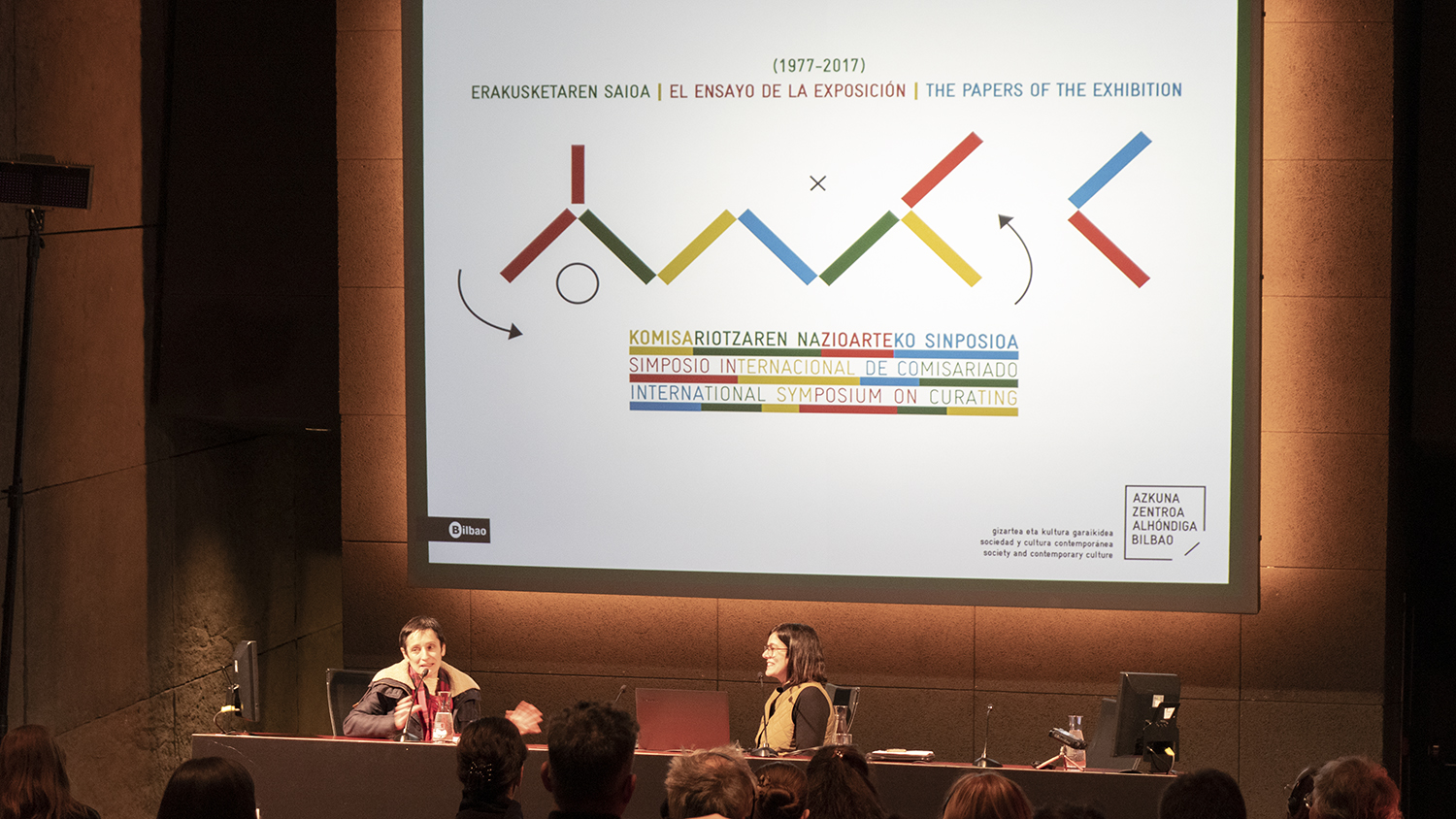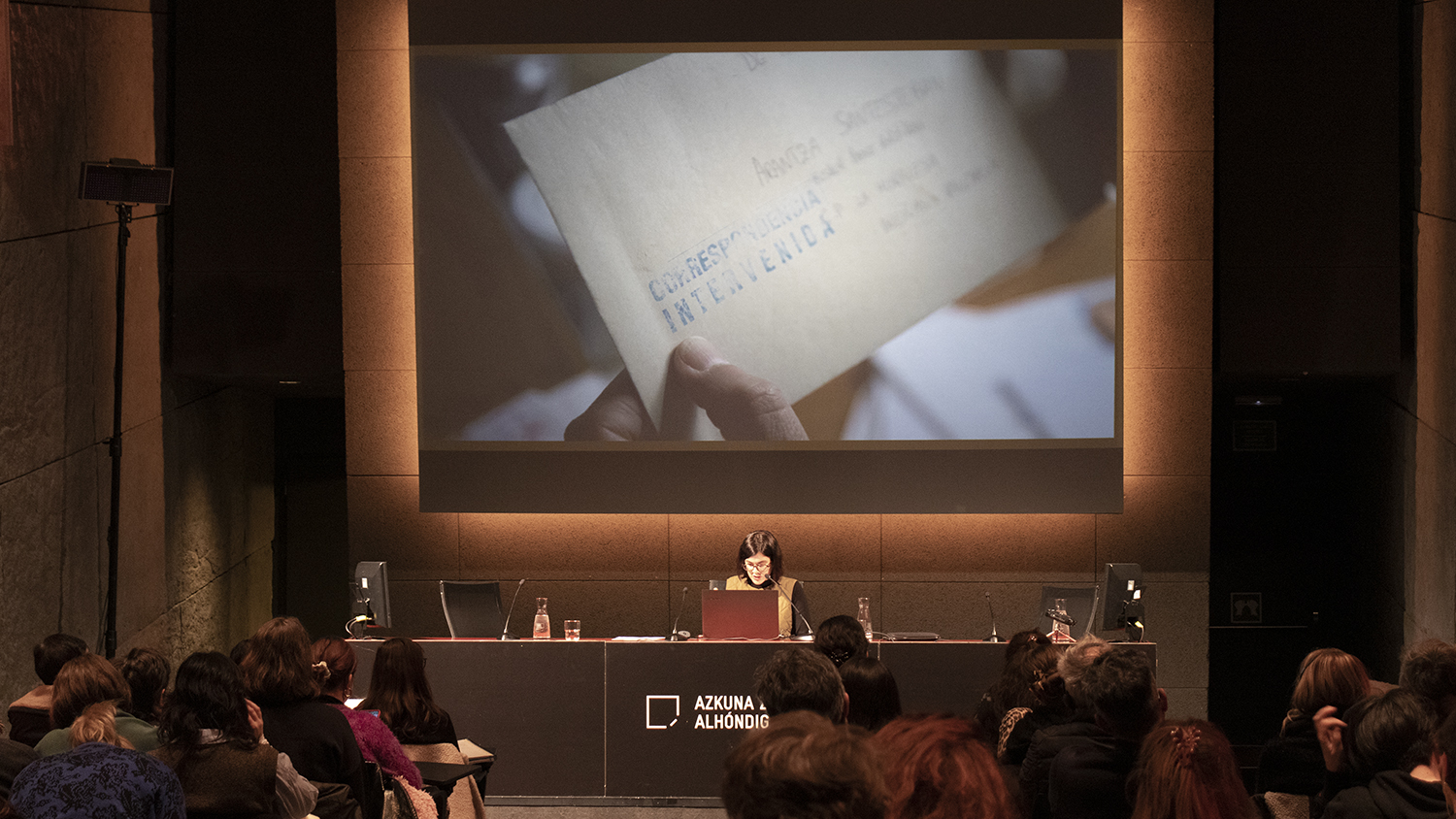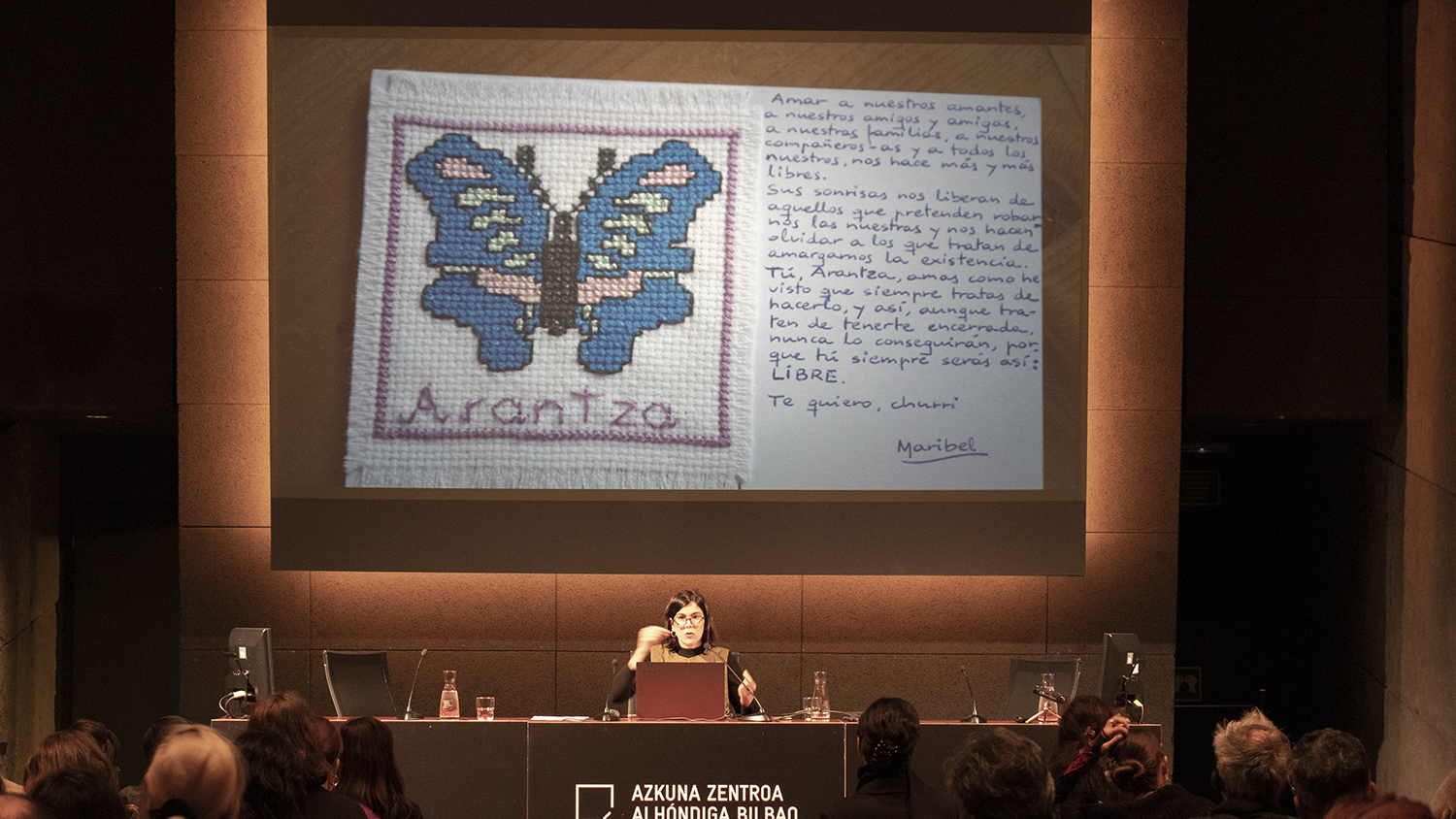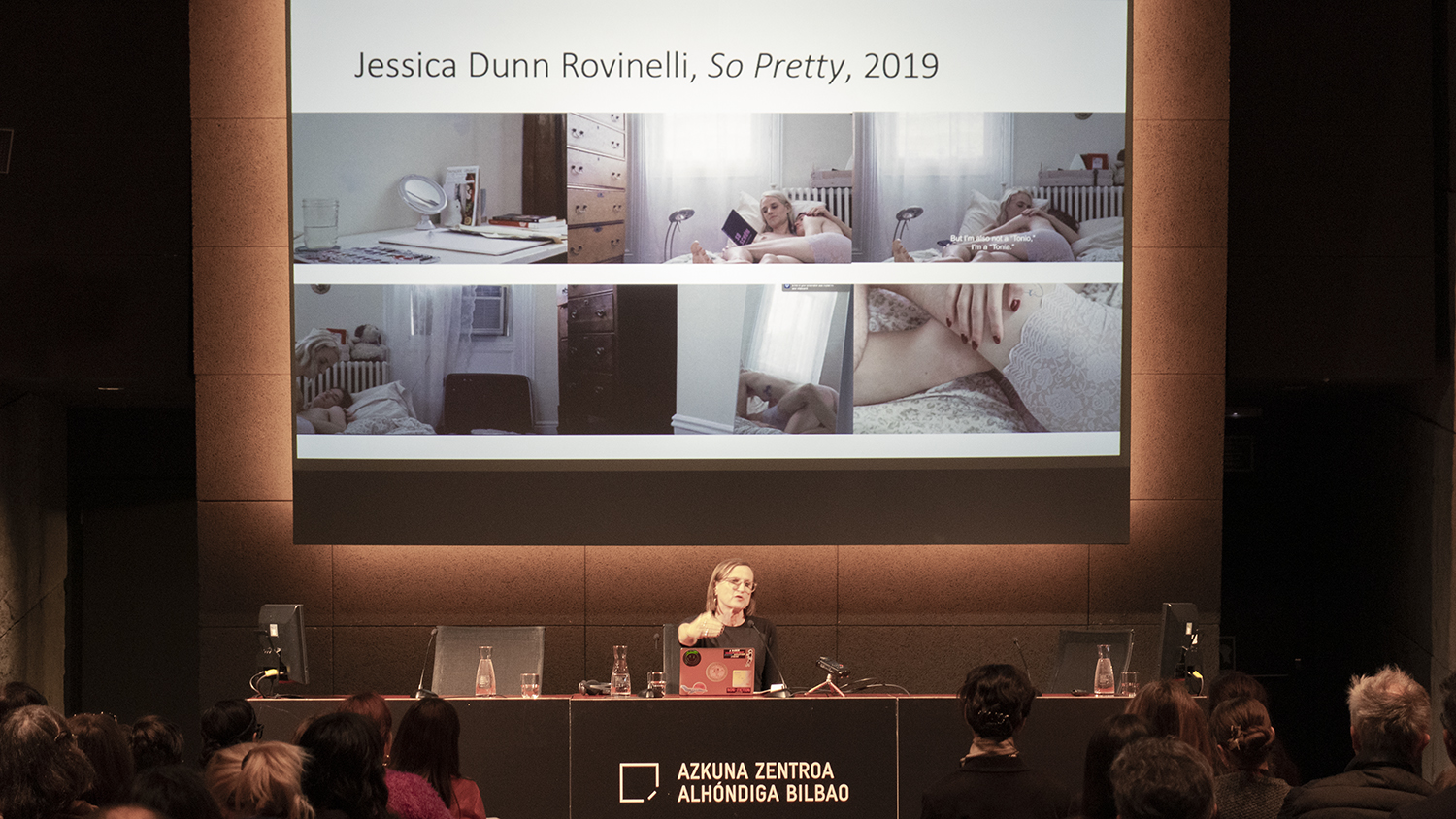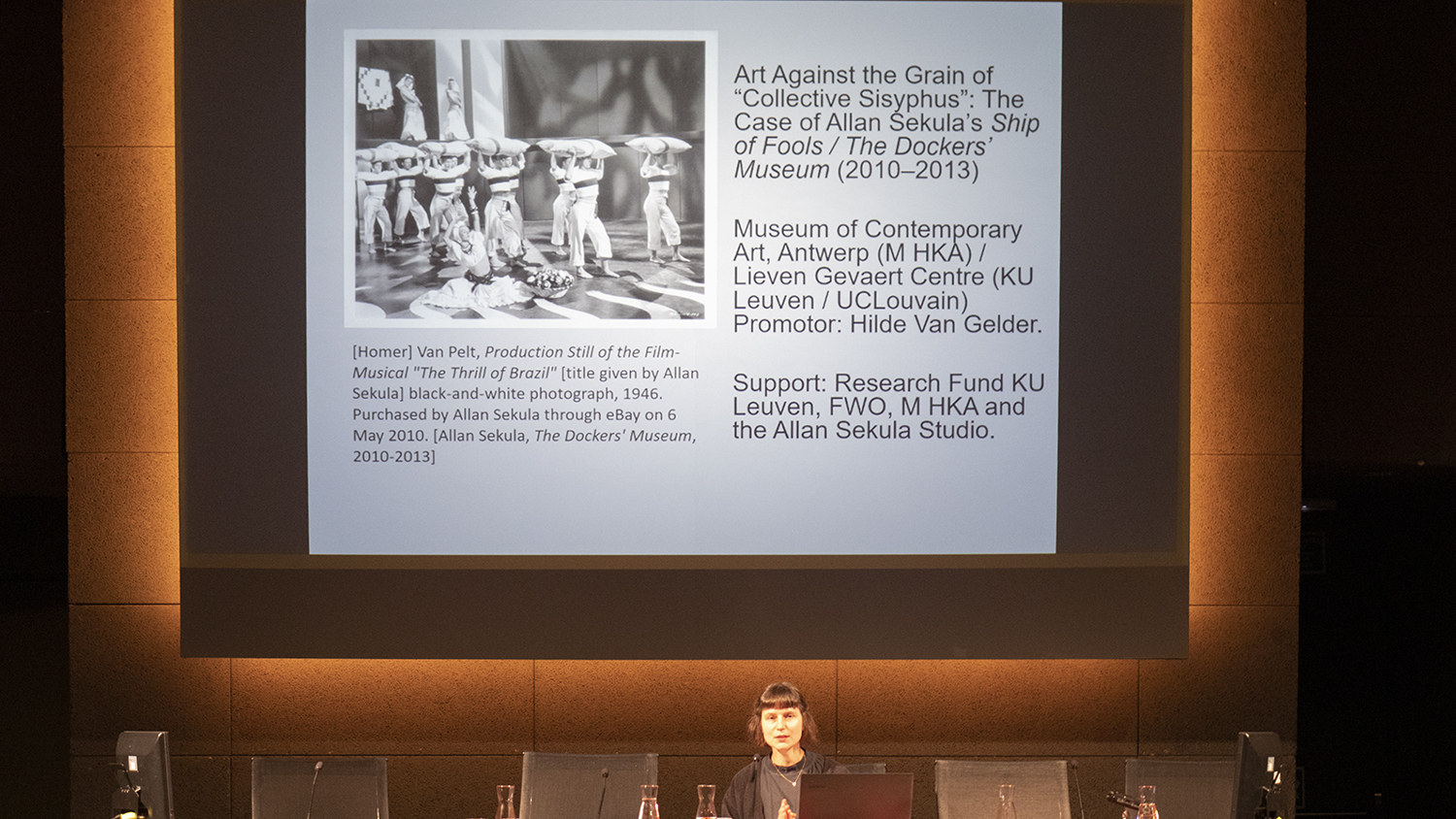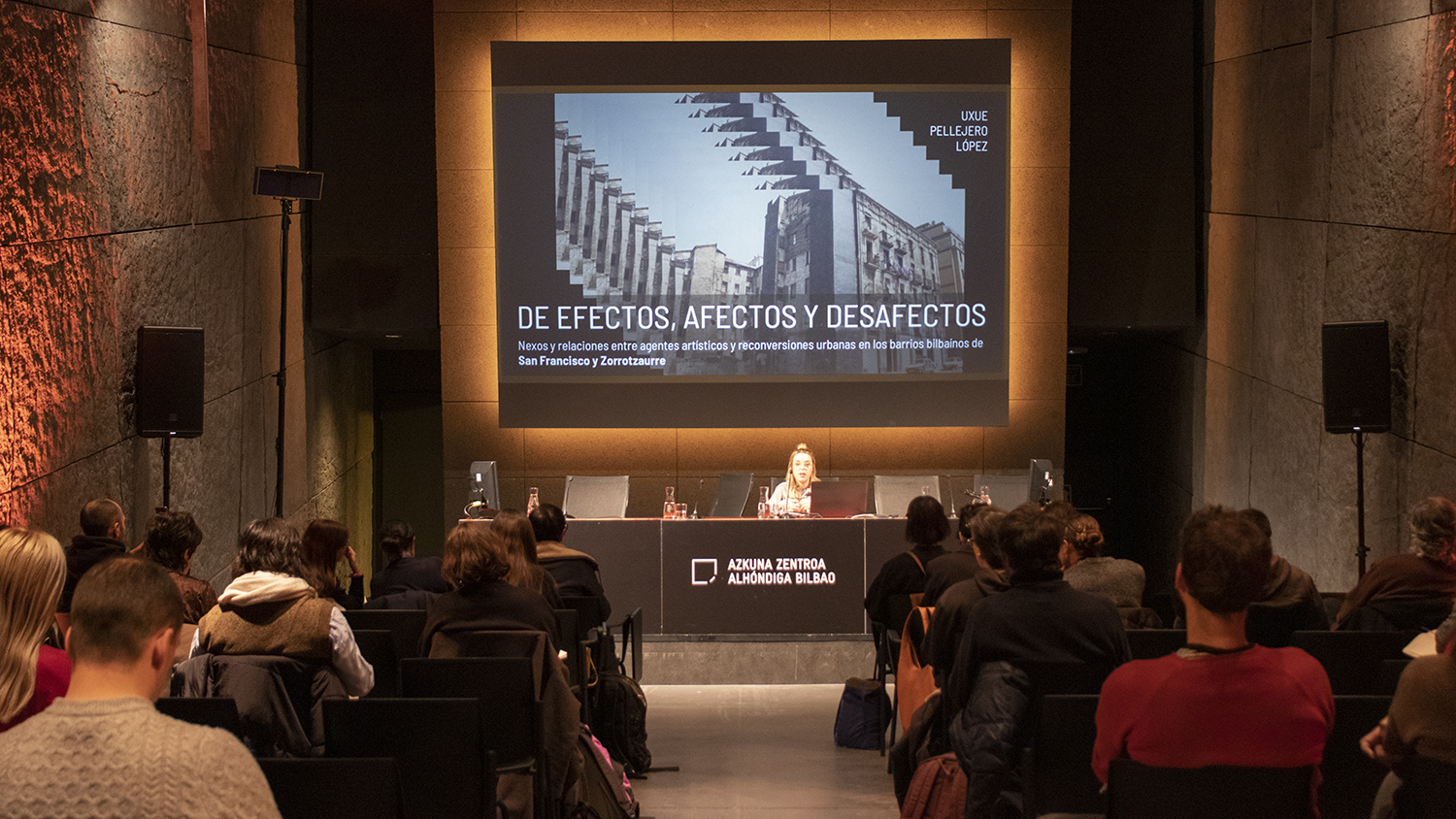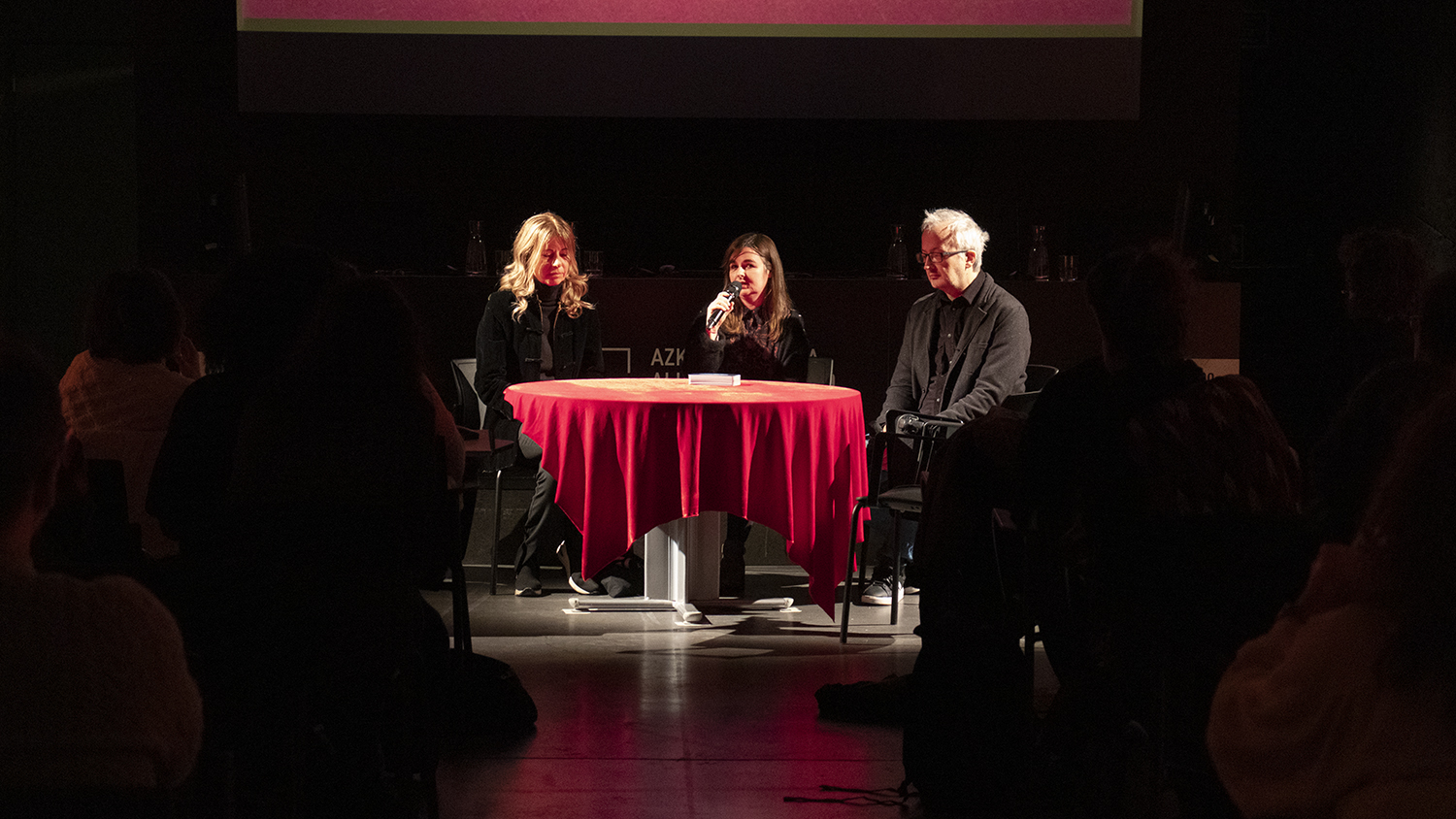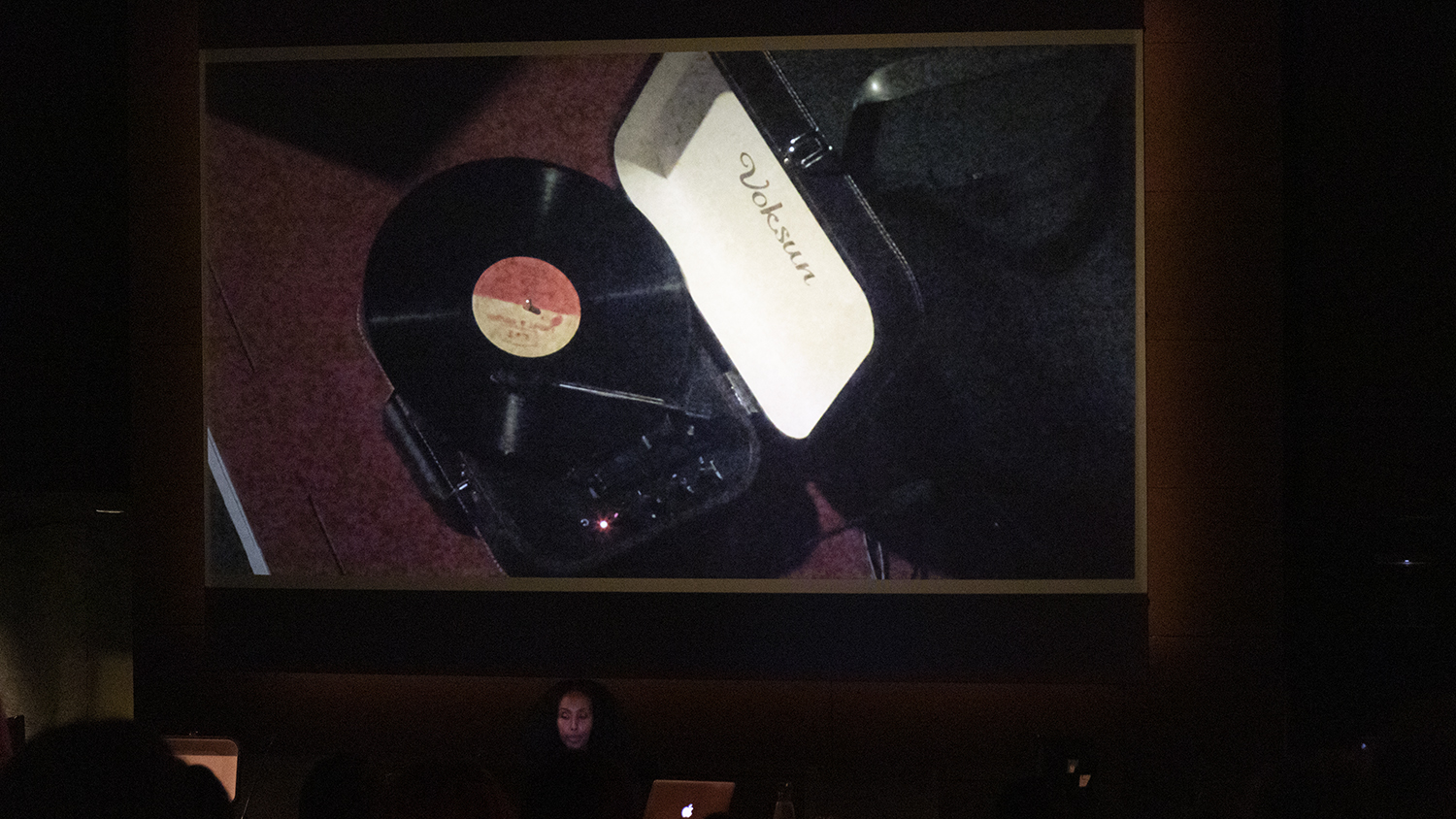The Papers of the Exhibition
5TH encOUNTER. the papers of the exhibition (1977-2017)
by
8-9 February 2023, AZKUNA ZENTROA.
The fifth and final encounter of The Papers of the Exhibition (1977-2017). International Curating Symposium.
The Papers of the Exhibition (1977-2017) is a collaborative project between Bulegoa z/b and Azkuna Zentroa which aims to study particular exhibitions between 1977 and 2017.
Four encounters have so far been held: a Prologue in 2016, followed by a further three in 2017, 2019 and 2020 focusing on the following decades: 1977-1987, 1987-1997, and 1997-2007.
The fifth and last encounter will be taking place on 8-9 February 2023 and will study exhibitions from 2007-2017, finalising this symposium on curating. It is proposed as a collective exercise to imagine the future of the exhibition.
Guest speakers: Sagal Farah, Anik Fournier, Azar Mahmoudian, Arantza Santesteban, Graeme Thomson & Silvia Maglioni, McKenzie Wark.
Papers: Uxue Pellejero, Andrea Rodrigo, Anja Isabel Schneider.
PROGRAMME*
Wednesday, 8 February, 2023
11:30-13:30: Papers:
Uxue Pellejero: Nexos y relaciones entre agentes artísticos y reconversiones urbanas en los barrios bilbaínos de San Francisco y Zorrotzaurre
Andrea Rodrigo: Amarre
Anja Isabel Schneider: “Ten Years After Seattle: One strategy, better two (…)”
4:00 pm. Introduction
4:30 pm. McKenzie Wark:The Cis Gaze and its Others
5:30 pm. Sagal Farah: FESTAC ’77
6:30 pm. Arantza Santesteban: Displaced Militant Narratives: Embracing Uncertainty as a Political Space
7:30. Conversation
Thursday, 9 February, 2023
4:00 pm. Introduction
4:30 pm. Anik Fournier: If I Can’t Dance, I Don’t Want To Be Part Of Your Revolution
5:30 pm. Azar Mahmoudian: Becoming Ground, Palm of the Hand and Foam
6:30 pm. Graeme Thomson & Silvia Maglioni: Dark Matter Cinema Tarot: A Nocturnal Committee in Bilbao
7:30 pm. Conversation
* Simultaneous translation into Basque, Spanish and English.
PRICES:
For information on prices, click here.
The Papers of the Exhibition (1977-2017)
An exhibition is a grouping of objects gathered temporarily together in a particular physical space. The visitor encounters forms; artefacts brought together in the same space and time. This circumstance enables the visitor to walk through the space creating itineraries, and allows a direct, although mediated encounter between their body and the objects. An exhibition is also a dispositif where things can unfold and overflow, also in the same spatial and temporal framework.
The polysemic word “essay” (ensayo) refers both to a text, a reflexive or discursive literary work, but also an initial effort or attempt, an experimental process. The Spanish title of this seminar El ensayo de la exposición 1977-2017 thus refers to two meanings of the same object: the exhibition as a place where thinking is produced, but also as a field where things can be tested out.
The Papers of the Exhibition 1977-2017 aims to study exhibitions over a period of forty years. In five encounters between 2016 and 2023, over thirty interpretations have been made of exhibitions in recent history. These readings offer approaches to different aspects of the exhibition: as a cultural object which reflects and responds to the historical conditions that produce it; as an institutional form that legitimises the works it holds; as an ephemeral device able to create interruptions and favour moments of attention, etc.
THE FOURTH AND FINAL DECADE: 2007-2017
The fifth edition of The Papers of the Exhibition (1977-2017) is the last of a series of encounters focusing on the study of particular exhibitions that took place in a period enclosed by the dates 1977, the year that began Franco “Bifo” Berardi’s “after the future”; and 2017 which, from our current position in 2023, seems as strangely far away as it does close in time.
The fifth and final edition will be dedicated to the years 2007-2017. While periodizing is necessarily an artificial, arbitrary act, we can say that that particular decade coincides with a time of global crisis, with the beginning of what is now agreed to be a new paradigm, beginning with the 2007-2008 financial crisis, continuing with the citizen protest movements in the early 2010s – The Arab Spring, 15M, Occupy Wall Street – and ending with Donald Trump inaugurating his presidency in the White House in 2017.
Other noteworthy phenomena from this period of instability and accelerated change are the fourth wave of the feminist movement, Black Lives Matter and the rise of the LGTBI+ movement. These were also years when the migrant crisis deepened and the Northern borders closed in response. The climate, ecology and energy resources were also stretched to critical point, showing the limits of capitalism’s expansion in the digital age.
The fifth and last edition of The Papers of the Exhibition (1977-2017) pauses to consider the figure of the exhibition, as does the exhibition itself, to create caesurae in time. Caesurae and interruptions to give us time to think, about exhibitions and through them. A collective exercise to imagine the future, and the future of the exhibition.
GUEST TALKS
McKenzie Wark: The Cis Gaze and its Others
Perhaps there are more transgender artists whose work is being exhibited, but perhaps this simply includes transgender art and artists within an existing mode of perception. What would it mean to see art in its totality from trans perspectives? Such a project might begin with a critique of the cis gaze, a way of seeing that orders the world through a standard model of the gendered subject, and treats anomalies to the standard model as exotic, humorous or dangerous. Perhaps we can develop another way of seeing, from the ways in which trans artists negotiate the cis gaze in their own practice.
Sagal Farah: FESTAC ’77
Between 15 January to 12 February 1977 cultural practitioners from 56 African nations and their diasporas alighted in Lagos, Nigeria to participate in FESTAC ’77 – the Second World Black and African Festival of Arts and Culture. In a listening session, Farah will share parts of the Somali participation in the 1977 festival and a personal archive of lived experiences. What does it mean for the body archive and for inter-generational knowledge transmission that the language of loss, that is so often used in the re-issue record industry, is used to speak about music that is very much alive in the minds, bodies and spirits of the generation who listen/ed and dance/d to it?
Arantza Santesteban: Displaced Militant Narratives: Embracing Uncertainty as a Political Space
The main militant narratives inherited from the 20th century are partly based around the ideas of dichotomy –of us vs. them–, and of absolutes; ignoring the potential for uncertainty, ambiguity or contradiction as spaces of great political potential. Is it possible to inhabit a political space that encapsulates these ideas? Based around the process of creation of the film 918 GAU, we consider some questions that could lead to a debate on other forms of political agency within the current context.
Anik Fournier: If I Can’t Dance, I Don’t Want To Be Part Of Your Revolution
I Can’t Dance I Don’t Want To Be Part Of Your Revolution (2005-present) is an organisation dedicated to exploring the evolution and typologies of performance and performativity in contemporary art. It is unique in its long-term collaborations with artists and researchers on the development, production and presentation of new work, and for operating without a fixed presentation venue, finding the ‘stage’ and conditions that best suits each commission. This structure allows the room to linger in the process, exploring performance methodologies beyond the presentation moment. The extended temporal and spatial framework also pose a different set of questions in terms of what and how each project is archived. This presentation will center a few past and recent commissions to unpack some of If I Can’t Dance’s archival methodologies, highlighting how the composite life-form of a work opens onto questions relating to performance and performativity in an expanded field.
Azar Mahmoudian: Becoming Ground, Palm of the Hand and Foam
In segregated societies, living in bubbles turns into a split experience. Insulation can create spaces of self-affirmation and growth, against systemic erasures and erosions. Thinking of cultural infrastructures, what is to be learned from conditions which require insulation, invisibility, or anonymity? While often associated with precarity, practicing such limits could also be understood as strong ethos, in interrupting the normative regimes of survivalism in the artworld; specifically, economies of visibility and modes of sociality produced by them.
This passage will speculate over potential unfoldings caused by inward moves: acknowledgment of the already existing, relying on kinships and reformulating relations with history. Respectively I reflect on how such questions inform my curatorial practice, in terms of self-organization, spaces of collective learning and, when necessary, withdrawal from exhibition making.
Graeme Thomson & Silvia Maglioni: Dark Matter Cinema Tarot: A Nocturnal Committee in Bilbao
The Dark Matter Cinema Tarot is a way to open up new channels of infra-perception connecting different realms of personal, aesthetic and political experience and enquiry through cinematographic images. In conceiving the DMC Tarot, Silvia Maglioni & Graeme Thomson have replaced the traditional 78 Major and Minor Arcana with a selection of photograms drawn from the history of cinema. Each reading of the Tarot summons a Nocturnal Committee: participants pose a burning question to the cards and “read” them collectively by sharing future and past visions, hypotheses, fabulations, speculative narratives, memories. At once work and tool, the DMC Tarot, through both the readings and their photographic and textual traces, opens up a space between discussion, performance and exhibition.
BIOGRAPHIES
McKenzie Wark is an Australian born, New York based writer and scholar. Her books in Spanish translation are Un manifiesto hacker (Alpha Decay), La playa bajo la calle (Hermida), El capitalismo ha muerto (Holobionte), and Vaquera Invertida (Caja Negra). Her most recent book, Raving was published by Duke University Press.
Sagal Farah (born in Mogadishu, Somalia) is a curator at SAVVY Contemporary – The Laboratory of Form-ideas in Berlin, Germany and an educator The Dutch Art Institute’s Roaming Academy.
Arantza Santesteban Perez (Iruña, 1979) is a historian, filmmaker and independent researcher. After completing a Degree in History at the Universidad del País Vasco, she went on to study audiovisual arts, with a Diploma in Creative Documentary making at the Francesca Bonnemaison centre, Barcelona. She is the director of several films including Passatgeres (2012), Euritan (2017), 918 GAU (2021) and Liluraren kontra (2021), and is currently reading her PhD at the Lisbon University of Fine Arts with Susana de Sousa Dias and Ana Longoni, researching themes relating filmic representation to feminism and the Basque political conflict.
Anik Fournier is the Curator of Archive and Research at If I Can’t Dance, I Don’t Want To Be Part Of Your Revolution (Amsterdam, NL) and teaches contemporary art theory at Base for Experiment Art and Research at ArtEZ (Arnhem, NL). Her current research and writing centers sounding and listening methodologies in the fields of performance art and pedagogy as crucial sites for the preservation and transmission of forms of embodied knowledge.
Azar Mahmoudian is an independent curator and educator. Her recent projects include the multi-chapter film program Sensible Grounds (2021) with iterations Communities of Oblivion (Betonsalon, Paris), Inhale ( Fundació Antoni Tàpies, Barcelona), and Tuning into the Rhythms of the Chronic (Nida Art Colony, Nida), among others, and When Legacies Become Debts, at The Mosaic Rooms (London, 2019). Between 2010 and 2015 she co-ran kaf, a collective space in Tehran and in 2021 initiated The Summer School: For a Summer Yet to Come in Tehran.
Graeme Thomson & Silvia Maglioni are filmmakers and artists whose work explores the porous borders between fiction and documentary, experimental cinema and installation, noise and music, the visible and the invisible. Their practice includes the creation of films (both features and shorts), mixed-media installations, sound works, film-performances, radio shows, vernacular technologies and books. The artists often make use of cinema to reactivate lost or forgotten archives and histories and to create new modes of re-enchantment and collective visions. In dialogue with literature, philosophy, music and science, their work is research-based, process-oriented and trans-disciplinary. Their work has been screened, presented and installed in major festivals and museums around the world. They are currently based between Paris and Palermo.

